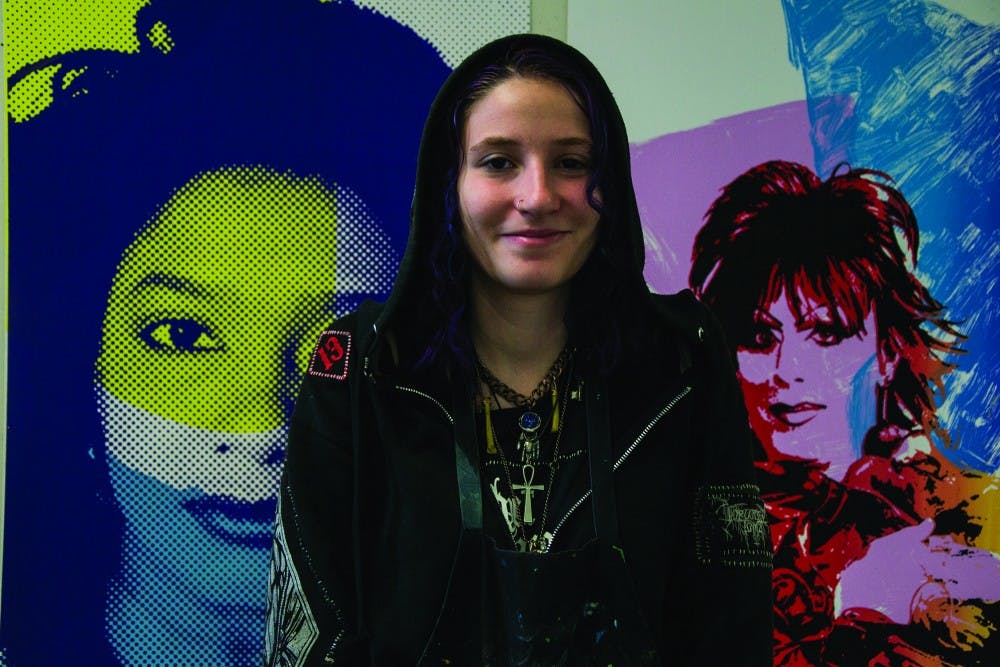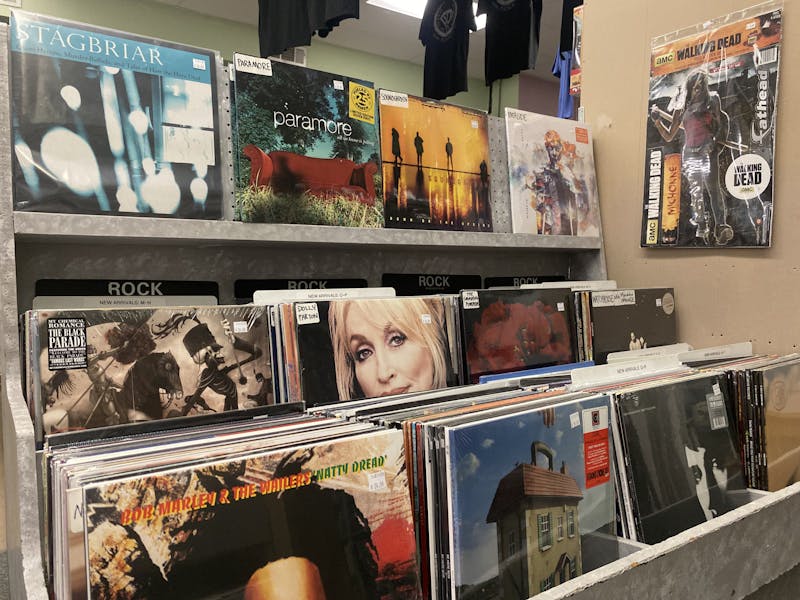In high school, Anna Velicky’s first screen-printing endeavor was a silkscreen T-shirt of the cover art for a Marilyn Manson album. It was the kind of T-shirt she couldn’t find stocked in the stores of her hometown, Florence, South Carolina, whose horror-punk scene remains largely underground.
It was during her adolescent years that Velicky found a home within this counterculture. She made work that reflected her interest in “very dark, emotional material” influenced by album art, comic books and cartoons. She describes her earlier work as an exploration of “feeling like a loose cannon” and not having concrete answers to the questions of who she was or what she wanted to do.
Now, the fourth-year studio art major, with a concentration in printmaking, finds not only that she gravitates more toward realism, but that she has roots as an artist from the South.
This past summer, Velicky was one of three students recommended by Mary Robinson, Head of Printmaking, to Alejandro García-Lemos in a sort of all-or-nothing deal that would result in the creation of a piece that would act in conjunction with the Andy Warhol exhibit at the Columbia Museum of Art. She and her friends Kyle Alston and Kaitlyn Shealy, the other two students recommended, divided shooting and printing duties and decided democratically on which Columbians to feature.
From Aug. 11 to Sept. 27, their colorful portraits of Boyd Saunders, Leslie Pierce, Harriett Greene, Shigeharu Kobayashi and Patti O’Furniture hung just outside the Warhol space, offering guests a look at individuals who make South Carolina “a better place for art.”
Through screen-printing and documentary photography, Velicky aims to highlight positive aspects of the communities that she is a part of and to dismantle negative stereotypes about southerners.
“The South isn’t getting a fair shake,” she said, implying that southerners are considered either antebellum types or “trailer trash,” neither of which capture the “unexpected diversity” in the region. The nature of Velicky’s work requires immersive interaction with numerous groups of people, especially those considered to be “on the fringe.”
She admits to harboring a certain degree of cynicism and a tendency to get jaded, but Velicky doesn’t possess a clinical numbness — people still surprise her. For example, she stopped her documentation of the lives of freight train hoppers, attesting to the emotional geography that her work entails.
Velicky hopes to inspire those who view her work to pursue art themselves.
What about that Manson T-shirt? “It’s beyond wearable — I made it into a pillowcase.”



